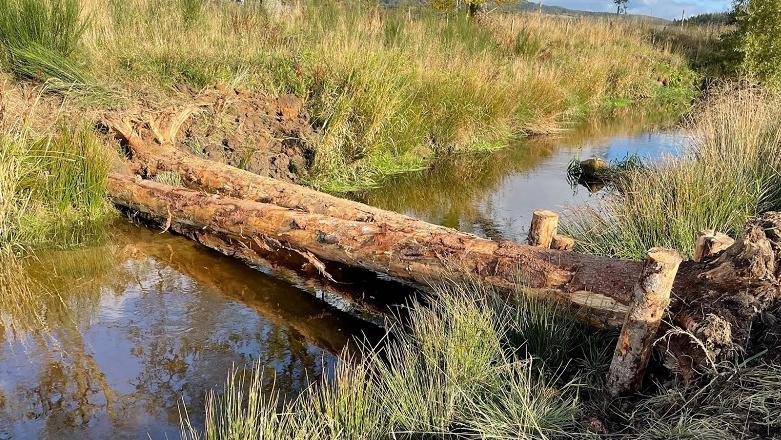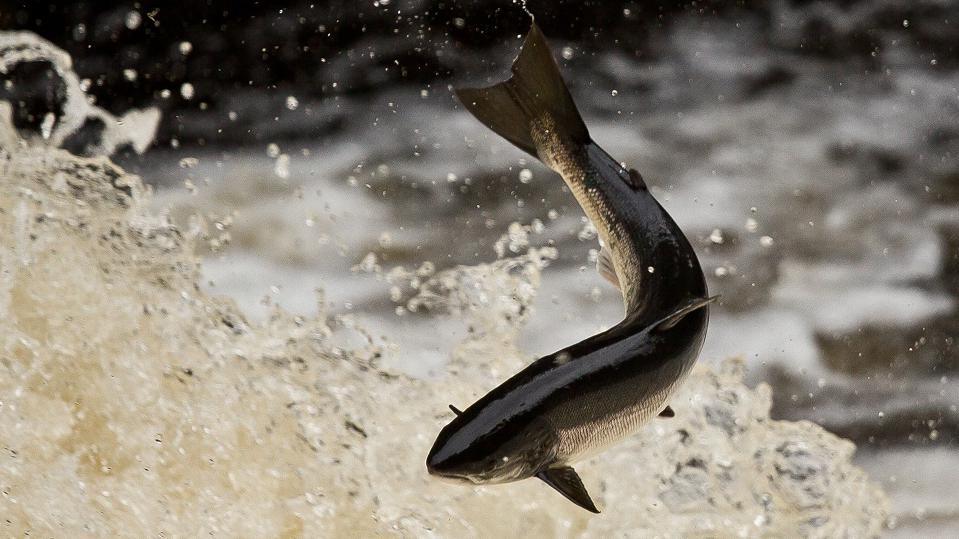Storm Arwen-damaged trees used to help save salmon
- Image source, Susan Cooksley/James Hutton Institute

Image caption, Trees blown down in last winter's Storm Arwen have been used to create wildlife habitats on an Aberdeenshire burn
1 of 3
- Published
Fifty trees damaged during last November's Storm Arwen have been put to use in a river restoration project.
The mature spruces were blown down in the storm, which saw winds gusting to 100mph and battered parts of north east Scotland, Dumfries and Galloway and the Scottish Borders.
The trees from Forestry and Land Scotland's (FLS) Scolty Woods, near Banchory, have been buried in the banks and bed of Easter Beltie Burn.
FLS said the trunks and roots created habitat for wildlife, such as Atlantic salmon, and would slow down the flow of water during periods of heavy rain.
The burn is a tributary of the River Dee.
Numbers of Atlantic salmon returning to Scotland's coast have been declining since at least 1971, according to Scottish government designate Marine Scotland, external.
'Climate change'
Philippa Murphy, FLS environment advisor, said managing storm-damaged trees was becoming a vital part of its work.
She said: “This project is a great example of putting storm-damaged trees to good use, to promote biodiversity and mitigate the effects of climate change, by reducing flood risk."
Edwin Third, river operations manager for the Dee District Salmon Fishery Board, said rivers were now among Scotland's rarest habitats with Atlantic salmon numbers in decline.
He said: “Hundreds of years ago, rivers such as the Dee would all have flowed through wooded landscapes where riverside trees would have been a vital part of the habitat structure, providing shade, shelter and food – as well as pools and gravel beds when they fall into the river, where aquatic species can hide from predators."
Related topics
- Published9 June 2022

- Published7 June 2022


